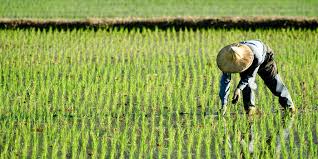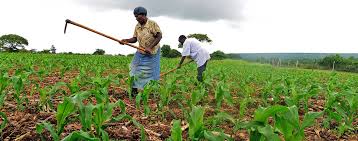This article focuses on cultural practices in crop production. These practices include the factors to be considered when selecting a site for crop farming, as well as the pre-planting, planting, and post-planting operations involved in crop production.
Read Also: Bedbugs: Description, Damages Caused, Control and Preventive Measures
Definition and Importance of Cultural Practices in Crop Production

All cultural operations on the farm are designed to manage the factors essential for healthy growth of crop plants. Some of these operations occur before planting, others during planting, and the final set after planting. Details of these operations are highlighted below.
Important Considerations in Site Selection for Crop Farming
When selecting a site for crop farming, the following factors should be considered:
A. Site Selection Considerations for Crop Farming
1. Proximity: This refers to how close the farm is to the farmer’s residence. A farm located near the farmer’s home allows for better security and convenience.
2. Fertility and Productivity of the Soil: The selected site must have fertile and productive soil. Soil fertility refers to the presence of essential mineral nutrients. These nutrients are grouped into macro and micro nutrients:
i. Macro nutrients: These are needed in large quantities to support proper plant development. Their absence or insufficient supply affects yield, growth, and vigor.
They include Nitrogen (N), Phosphorus (P), Potassium (K), Carbon (C), Hydrogen (H), Oxygen (O), Calcium (Ca), Magnesium (Mg), and Sulphur (S).
ii. Micro nutrients: These are required in small quantities and are also known as trace elements. They support crop development, but their deficiency has milder effects.
They include Iron (Fe), Manganese (Mn), Zinc (Zn), Copper (Cu), Boron (B), Molybdenum (Mo), Chlorine (Cl), and Sodium (Na).
Nutrients can come from organic sources such as green manure, farmyard manure, and compost, or from inorganic sources like synthetic fertilizers.
3. Soil Productivity: This is the ability of the soil to support plant life. It includes mineral components and soil properties like texture, structure, and porosity. These determine nutrient and water availability.
For example, clay soil retains water but may limit nutrient availability due to poor drainage, while sandy soil may lose nutrients through leaching due to its coarse texture.
4. Topography of the Area: This refers to the slope of the land. A flat or gently sloped land is preferred to avoid erosion. Steep slopes lead to soil degradation and hinder soil formation.
5. Water Supply: A good farm site should have a reliable water source. Water is essential for crops, equipment cleaning, animal care, and workers’ hygiene.
6. Shady Areas: Shady locations should be avoided, especially for school gardens, as they block sunlight needed for photosynthesis. Inconsistent light reduces growth and yield.
7. Accessibility: The site should have an accessible road for equipment movement and transportation of produce.
8. Rocky Areas: Rocky land is hard to cultivate and may lack enough soil for proper root anchorage. This leads to plant instability, especially during rainfall or strong winds, and limits root or tuber penetration.
B. Essential Pre-Planting Operations in Crop Farming
Land preparation involves clearing vegetation, removing stumps, and preparing the soil using primary and secondary tillage equipment.
C. Land Clearing Methods for Crop Production
Land clearing refers to removing natural vegetation in preparation for crop production. This can be done in the following ways:
1. Manually: Using tools like machetes and hoes. This method causes minimal soil disturbance but is time-consuming and labor-intensive, making it suited for small-scale farms.
2. Burning: Involves setting dry vegetation on fire. Though quick and cheap, it has both positive and negative effects:
i. Benefits: Quickly removes vegetation, adds potassium through ash, controls pests and diseases, and stimulates new growth.
ii. Drawbacks: Causes nitrogen and sulphur loss, exposes soil to erosion, kills beneficial organisms, reduces water content, destabilizes pH, alters soil structure, depletes organic matter, and pollutes the environment.
3. Mechanical Clearing: Uses machines like ploughs and harrows, especially in grassland areas. This method is efficient for large-scale farms.
D. Tree Removal (Destumping) Operations Before Seedbed Preparation
This involves removing trees before seedbed preparation through:
1. Traditional Methods: Ring barking and bush burning, which cut off nutrient flow in trees, leading to their death.
2. Chemical Methods: Using herbicides like 2,4-D or 2,4,5-T applied to the stem or soil to kill trees.
3. Mechanical Methods: Using machines like tree pushers, root rakers, and chain tractors to remove trees effectively.
E. Tillage Activities in Crop Production
Tillage involves loosening the soil to improve its condition and prepare seedbeds. Good tilth results in crumbly soil that retains air and water. It includes:
1. Primary Tillage: Deep soil stirring through ploughing.
2. Secondary Tillage: Cultivating or ridging to mix organic matter and destroy weeds.
Reasons for Tillage Include:
1. Preparing suitable seedbeds
2. Improving aeration
3. Conserving soil moisture
4. Reducing weed competition
5. Promoting microbial activity
6. Enhancing soil fertility by mixing organic matter
Read Also: 10 Medicinal Health Benefits Of Jakhya (Cleoma viscosa)
Planting Activities and Methods in Crop Farming

Planting operations vary based on crop type and farm scale:
1. Nursery Methods: Plants are first grown in nursery beds, polythene bags, boxes, or greenhouses before transplanting.
2. Permanent Planting Methods Include:
i. Broadcasting: Spreading seeds uniformly over the field; used for small seeds.
ii. Drilling: Planting seeds in rows using seed drills, often combined with fertiliser application.
iii. Stake or Check Planting: Placing a set number of seeds per hole with spacing between rows, allowing easy population estimation and spacing adjustments.
Types and Selection of Planting Materials for Crop Production
Most crops use seeds as planting materials. Seeds develop from fertilised ovules, e.g., maize, groundnut. Vegetative materials like cuttings, tubers, and vines are also used.
Selection of Planting Materials Should Consider:
1. Vigour and size of parent plant; healthy plants produce better seeds
2. Full maturity; immature seeds may not germinate or survive
3. Seed size; larger seeds have more reserves and yield better
4. Physical quality; seeds should be well-formed and firm, not wrinkled or soft
5. Storage duration; prolonged storage reduces germination rate
6. Moisture level; seeds should be dried to about 12% to prevent mould.
Do you have any questions, suggestions, or contributions? If so, please feel free to use the comment box below to share your thoughts. We also encourage you to kindly share this information with others who might benefit from it. Since we can’t reach everyone at once, we truly appreciate your help in spreading the word. Thank you so much for your support and for sharing!

